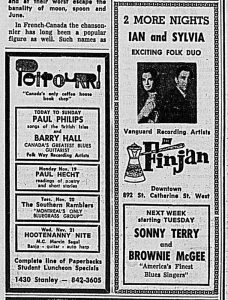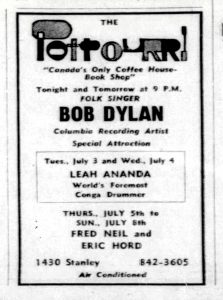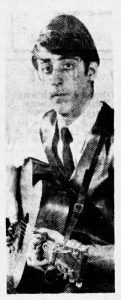Gary Eisenkraft Enters the Scene
In the early 1960s there was a new interest in folk music, especially among young people who found the socially engaged lyrics appealing.
Montreal had several coffeehouses and concert venues presenting folk acts. One of them was the small Potpourri coffeehouse, where a young and still unknown Bob Dylan played in 1962.
The New Penelope story begins in this setting, between 1964 and 1966, as a series of small coffeehouses, until it became The New Penelope in 1967. The man behind it all was Gary Eisenkraft, himself a folk singer and a big fan of blues music.
Gary Eisenkraft grew up in Montreal’s Notre-Dame-de-Grâce district, and was a huge music fan from a young age. After catching the folk bug, he spent his teenage years playing guitar, singing, and hanging out with Shimon Asch, owner of the Finjan coffeehouse.
By age 15, he was already on stage as a guitarist for the Rockin’ Tornadoes band, in a school performance, in the Eastern Townships. Gary Eisenkraft dropped out of school when he was 16 and hitchhiked to the United States to support the American civil rights movement.
He spent almost five years traveling with a guitar in arm, performing solo or accompanying folk artist Jean Ritchie. He performed in almost every college coffeehouse in the Canadian and American circuits. Eisenkraft met and befriended many folk musicians playing in the relaxed and no-frills atmospheres of these small venues. This helped him cultivate a network of contacts in the musical world, particularly in New York City. He gained valuable experience working at a club, in Long Island, run by Albert Grossman. Grossman was one of the leading promoters of American folk and rock and roll music, at the time.
He returned to Montreal with a mission: to use his connections in New York to introduce Montrealers to trendy American groups. Eisenkraft was also inspired enough by the coffeehouses to open his own, in Montreal, in 1964.
To grasp the unique atmosphere of a typical coffeehouse, listen to George Ferenczi who frequented them in the 1960s:
Listen to the audio clip with transcript: “George Ferenczi on the coffeehouse scene on Stanley Street”.
Since several other coffeehouses had recently closed, Eisenkraft’s venture was perfectly timed. Their regulars were happy to find a new generation of them starting up!





